Ethics, Excess, Extinction
Section Three: EXTINCTION
For millennia, species have become extinct, as they die off due to natural disasters, the vagaries of evolution or, more recently, the infliction of human development on the planet. There have been five mass extinctions throughout the earth’s history — the last one was about 66 million years ago — when roughly three-fourths of the earth’s species vanished.
But extinction happens in our lifetime, too, through illegal hunting, overfishing, degradation of habitat, natural disasters, disease and other factors. The notion of “environmental crimes” dates only to the late 1990s, but has become one of the most serious threats to the survival of some plant and animal populations. For example, as many as 20 percent of Africa’s elephants could be killed in the next 10 years if illegal poaching continues at its current rate.
Climate change is another way humans are threatening species’ very existence. There is great interest in understanding how species, from polar bears to honey bees, might respond to a changing climate, and predictions have varied greatly, but scientists agree that climate change has devastating effects on our communities, wildlife and the habitats they depend as we all face intensified uncertainty and risks of extinction.
Are we doomed, as some scientists believe, to a sixth mass extinction? Or can we learn how to protect species from disappearing and, in the process, help save ourselves?

Huddle
Esther Traugot, 2014, found honeybees, dyed cotton thread, glass dome, Plexiglass base, © 2014, courtesy of the artist
Traugot grew up surrounded by nature, influenced by her parents’ participation in the Back to the Land movement in the 1970s. Her desire to see a world in which humans cohabitate symbiotically with plants and animals is reflected in her work. The “bandages” she crochets are an outward symbol of Traugot’s desire to nurture and protect those that often face hardships at the hands of humans. The gold thread is indicative of the importance she finds in even the smallest bees, conjuring images of gilded, priceless objects.
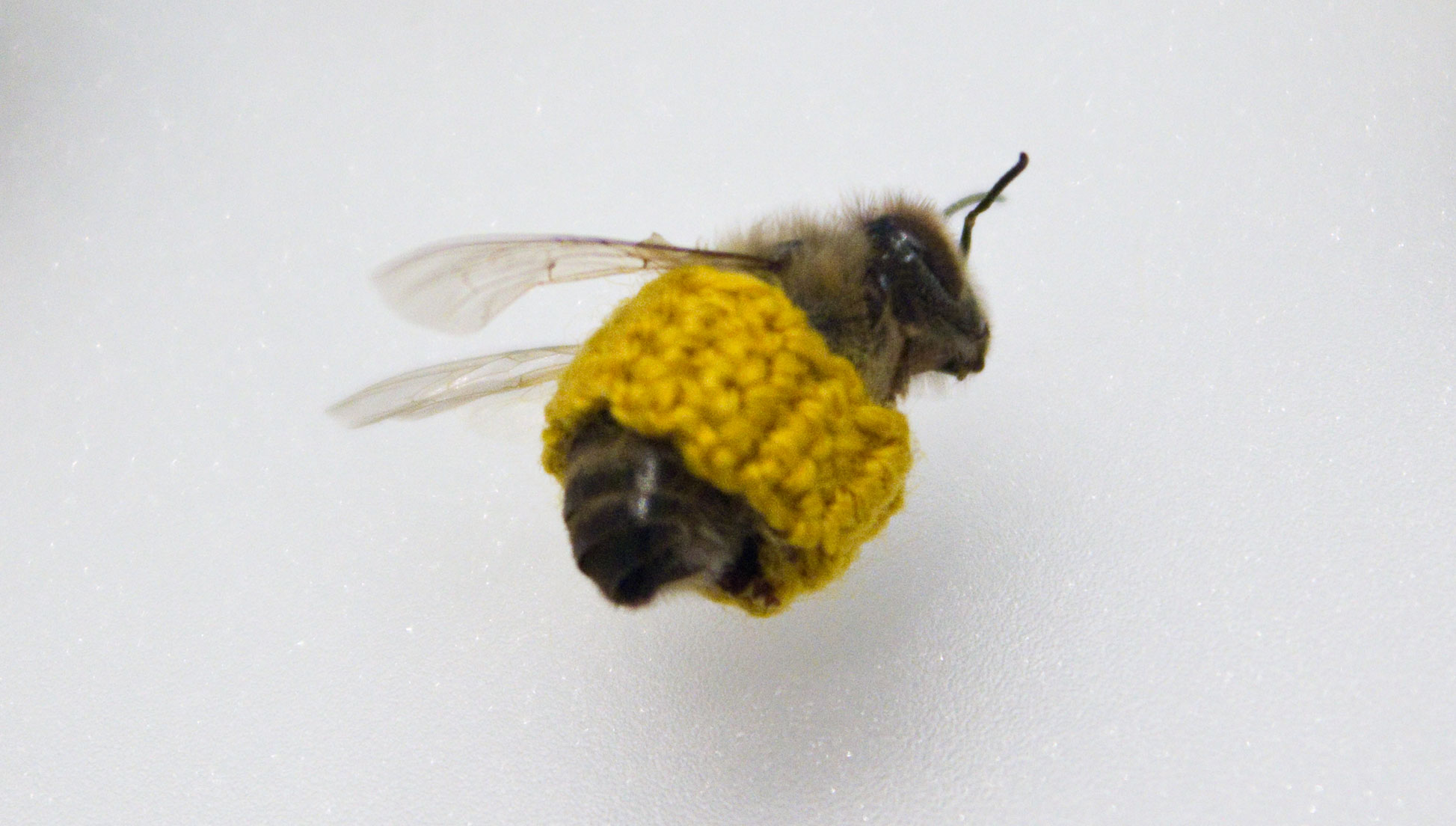
Huddle (detail)
Esther Traugot, 2014, found honeybees, dyed cotton thread, glass dome, Plexiglass base, © 2014, courtesy of the artist
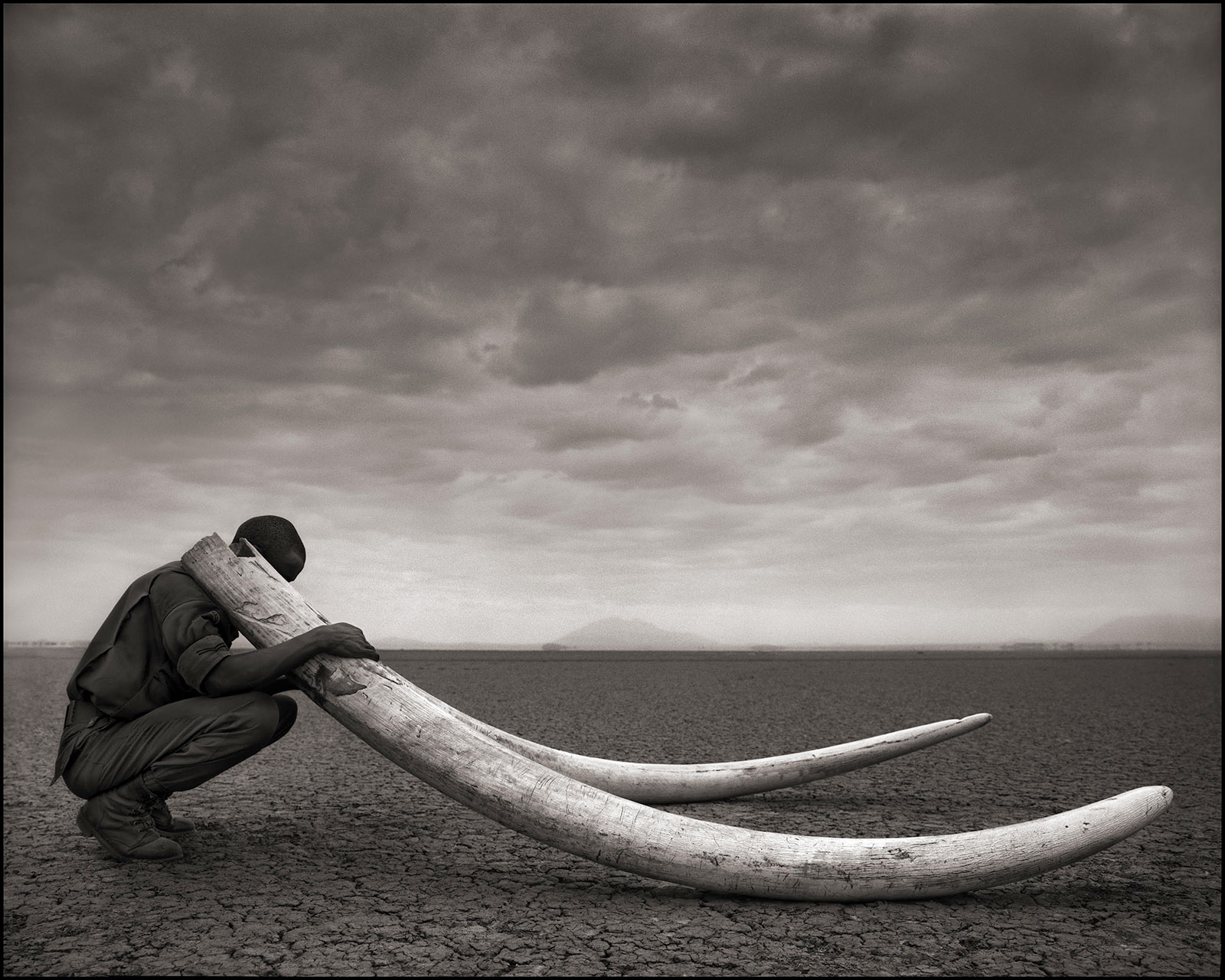
Ranger with Tusks of Killed Elephant, Amboseli
Nick Brandt, 2011, archival pigment print, 56″ x 70″ © 2011, courtesy of the artist
These photographs feature rangers employed by Big Life, a conservation group co-founded by the artist, located in Amboseli National Park in Kenya,. The photographs portray the undeniable juxtaposition of nature and a world influenced by humans. By spending years shooting in the same location, Brandt was able to closely follow the evolution of elephant poaching and now plays a major role in bringing the practice to an end.
An elephant in Africa is illegally slaughtered every 15 minutes due to poaching, as the demand for their ivory tusks continues. At this rate, African elephants could become extinct within two decades.
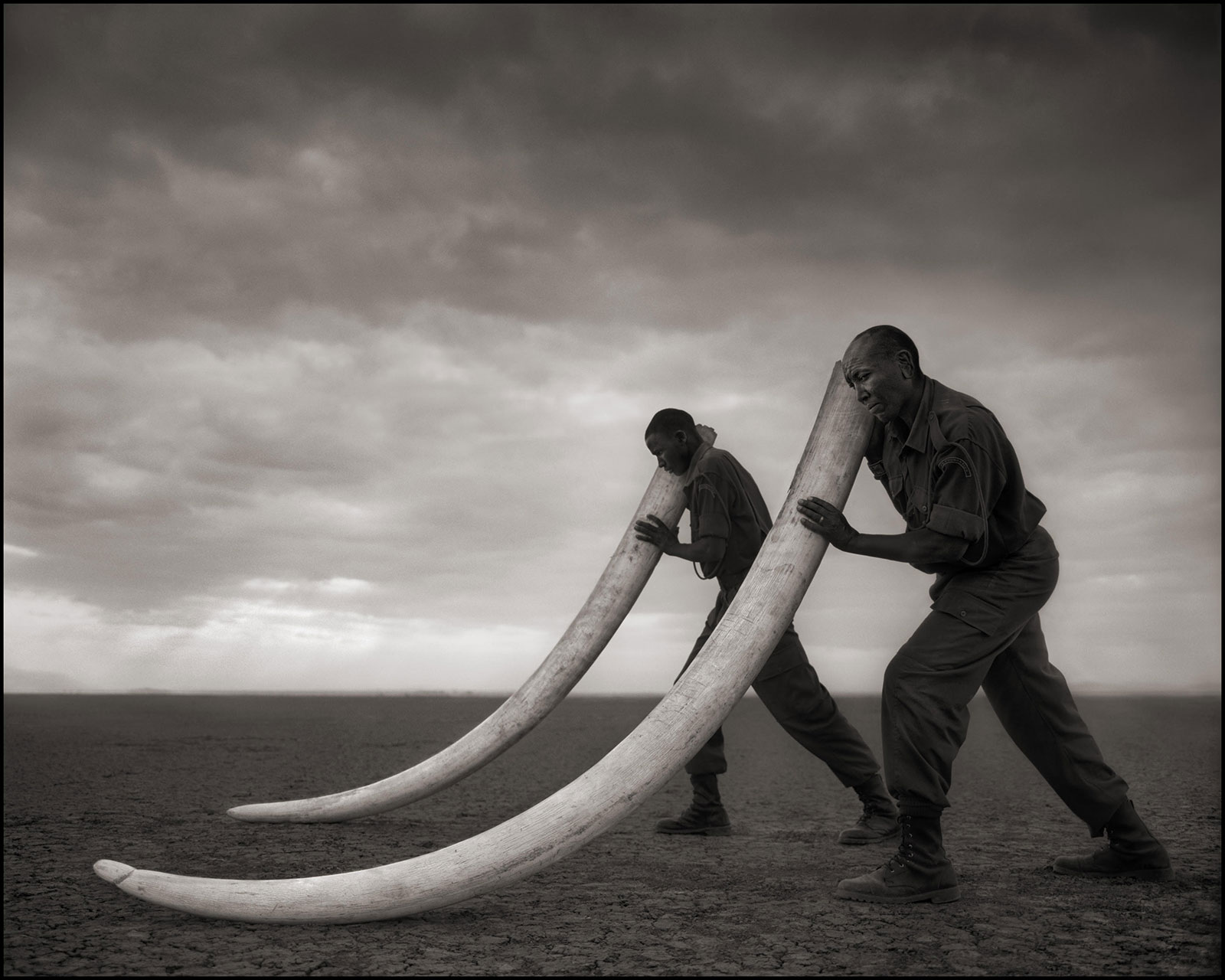
Two Rangers with Tusks of Killed Elephant, Amboseli
Nick Brandt, 2011, archival pigment print, 56″ x 70″ © 2011, courtesy of the artist
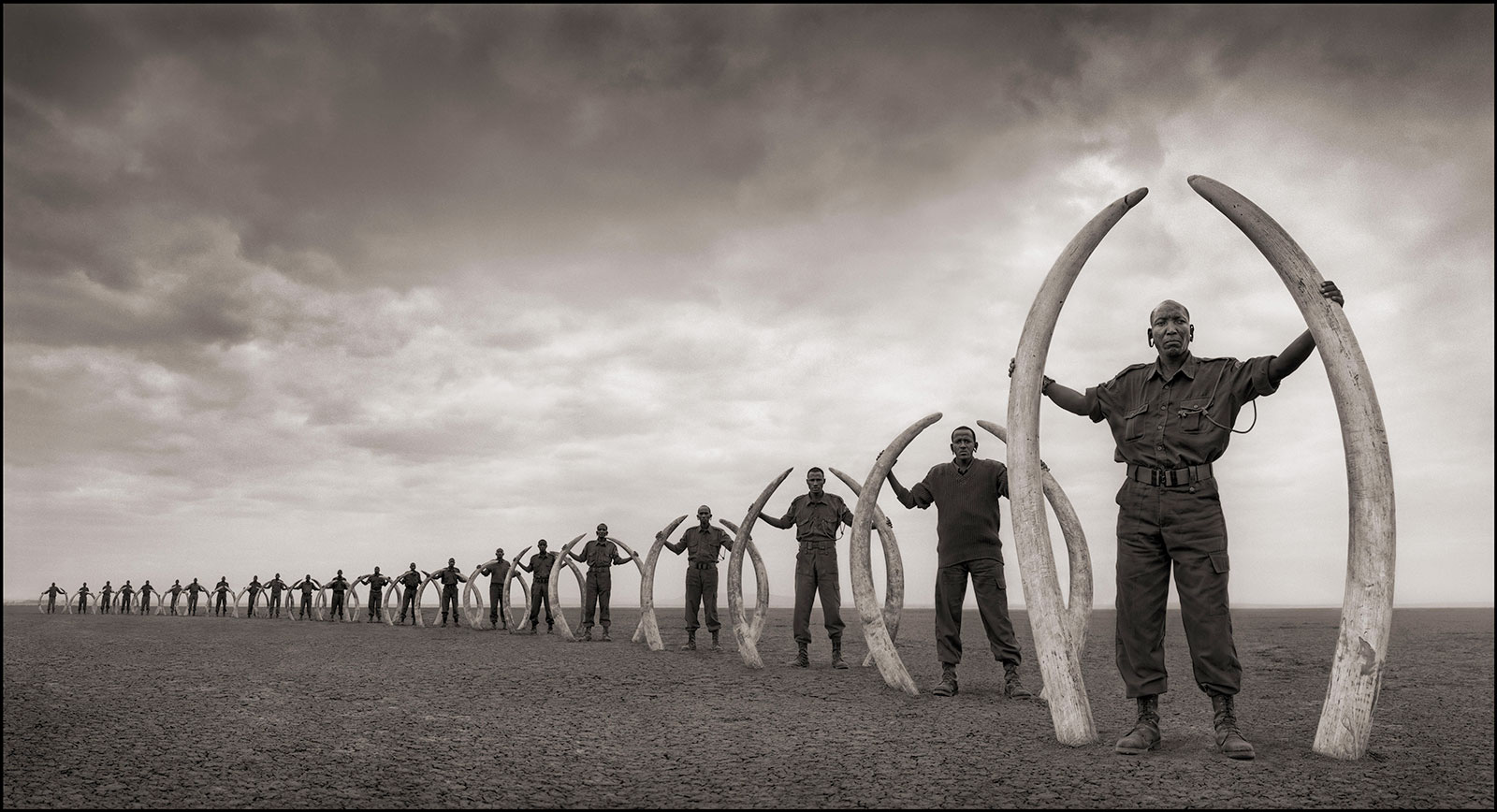
Line of Rangers Holding Tusks Killed at the Hands of Man, Amboseli
Nick Brandt, 2011, archival pigment print, 40″ x 74″ © 2011, courtesy of the artist
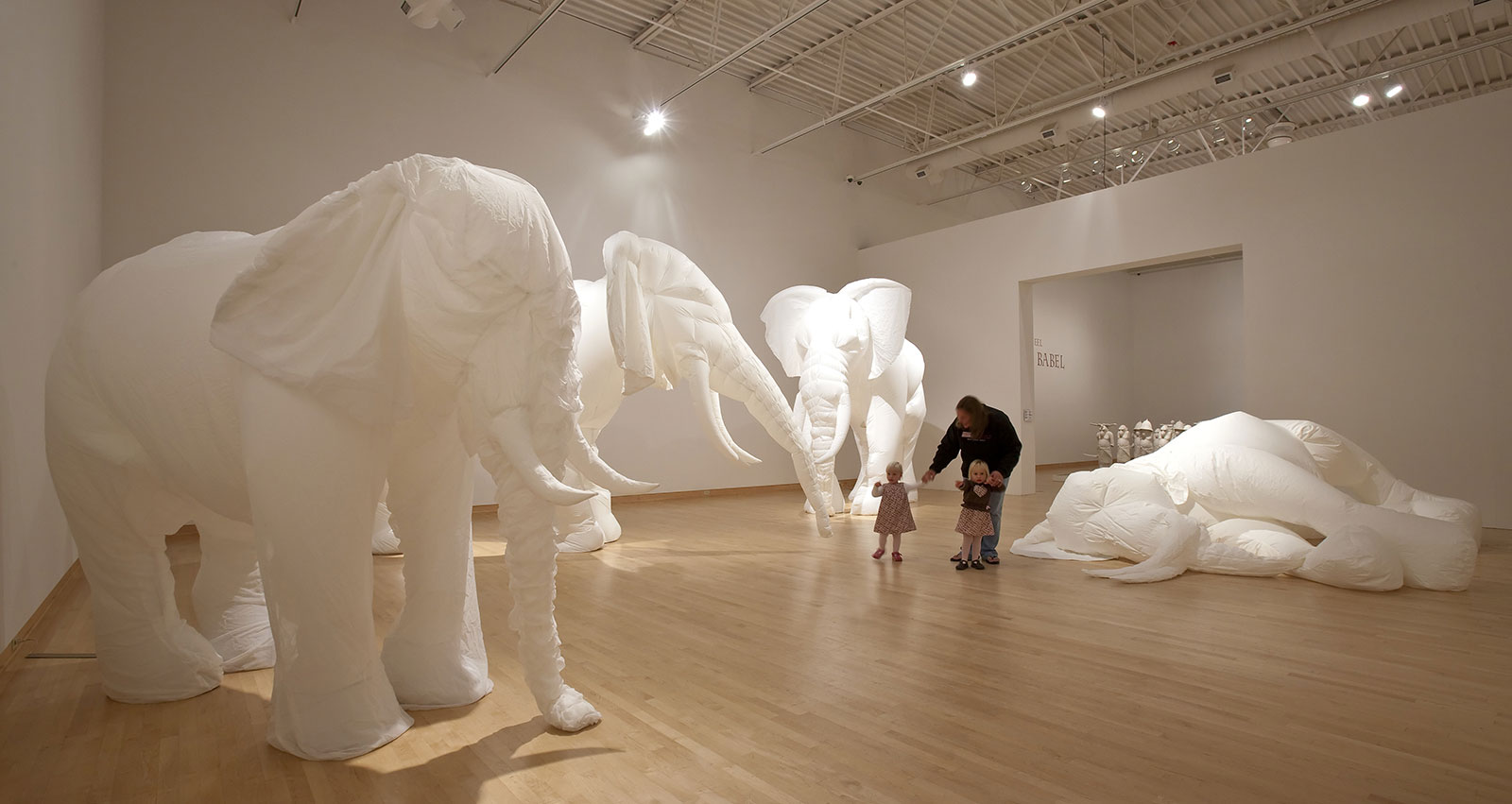
White Elephant
Billie Grace Lynn, 2007, 3 inflatable elephants, ripstop nylon, chiffon, electric fan, 10′ x 6′ x 8′ © 2007, courtesy of the artist
Interacting with these structures is a paradoxical experience. On one hand, their size and grandeur is undeniably drawn from the elephant. On the other, given the current levels of poaching worldwide, this may become the only form in which humans will be able to experience these beasts. Their inflatable form and white color contribute to a sense of invisibility and also the notion of “the elephant in the room”: Their loss through poaching is an issue too big to go unrecognized or ignored.
Ryder and Hazel, XMALIA Performance
Ryder Cooley, 2011, photographs, each 32″ x 31″ © 2011, courtesy of the artist and Louis Tortora. Photo credit: Louis Tortora
This dark tale about extinction features songs about extinct animals such as the Tasmanian Tiger and the Giant Deer, sung by a lost musician who summons the animals back to life for her Graveyard Cabaret. Cooley’s performance involves three extinct animals: the Tasmanian tiger, the Pyrenean ibex, and the Xerces blue butterfly. Each of the creatures, brought hauntingly back to life through taxidermy, becomes part of Cooley’s performance.
XMALIA Performance with Lady Moon
Ryder Cooley, 2011, video excerpt of multi-media performance, 4 minutes and 45 seconds © 2011, courtesy of the artist.
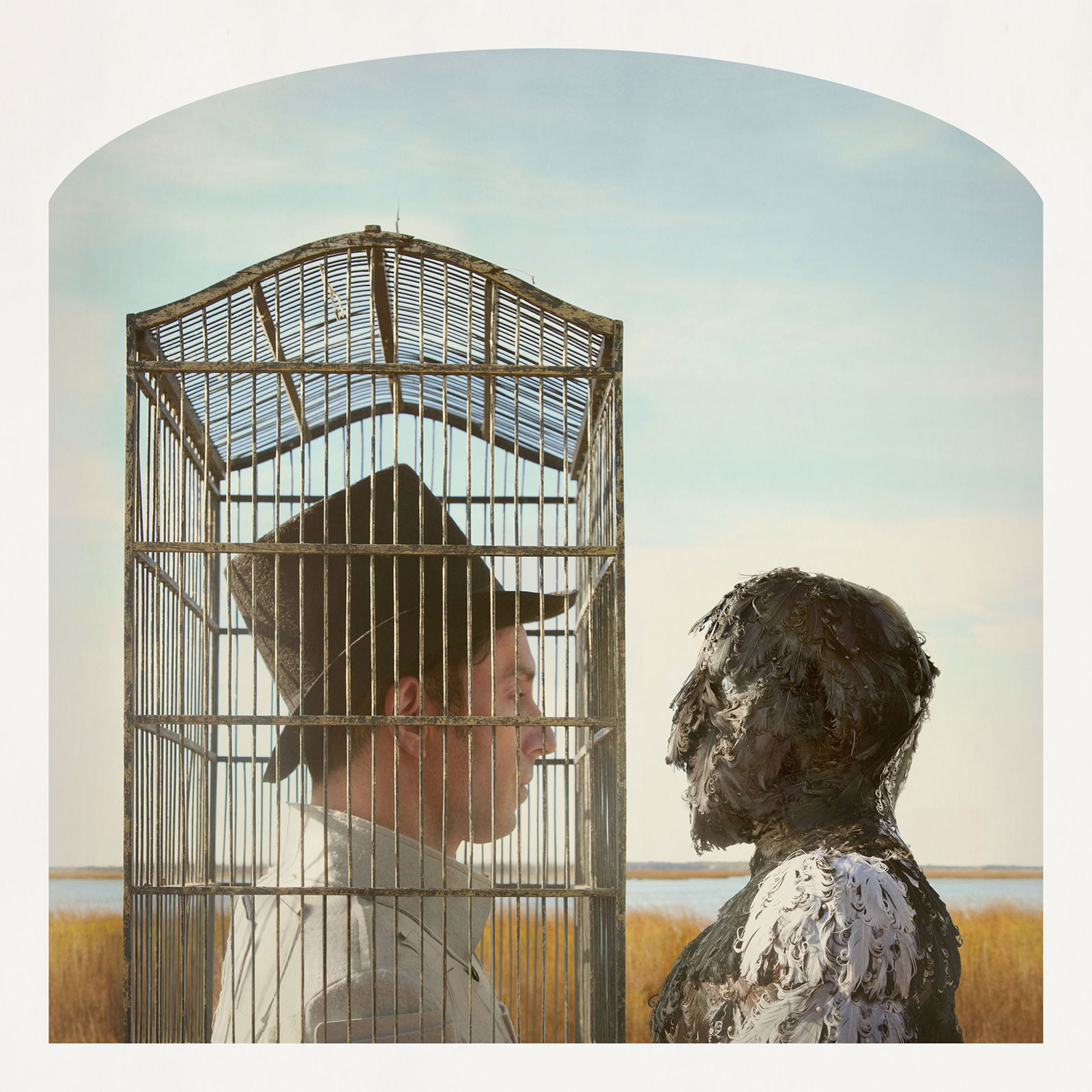
Persona
Nicholas Kahn & Richard Selesnick, 2014, archival inkjet print, 35″ x 35″ © 2014, courtesy of the artists
Known for elaborately staged metanarratives blending historical events with their own Dadaist performance, the darkly humorous visual fantasies of Kahn & Selesnick operate as wry metaphor, addressing economic, political, and ecological crises around the globe.
The fictitious cabaret troupe, the Truppe Fledermaus, travel the countryside staging absurd and inscrutable performances in abandoned landscapes beyond the town’s edge. The playful but dire message presented by the troupe is of impending ecological disaster, caused by rising waters and a warming planet, the immediate consequences of which include the mass extinction of bats and other animals.
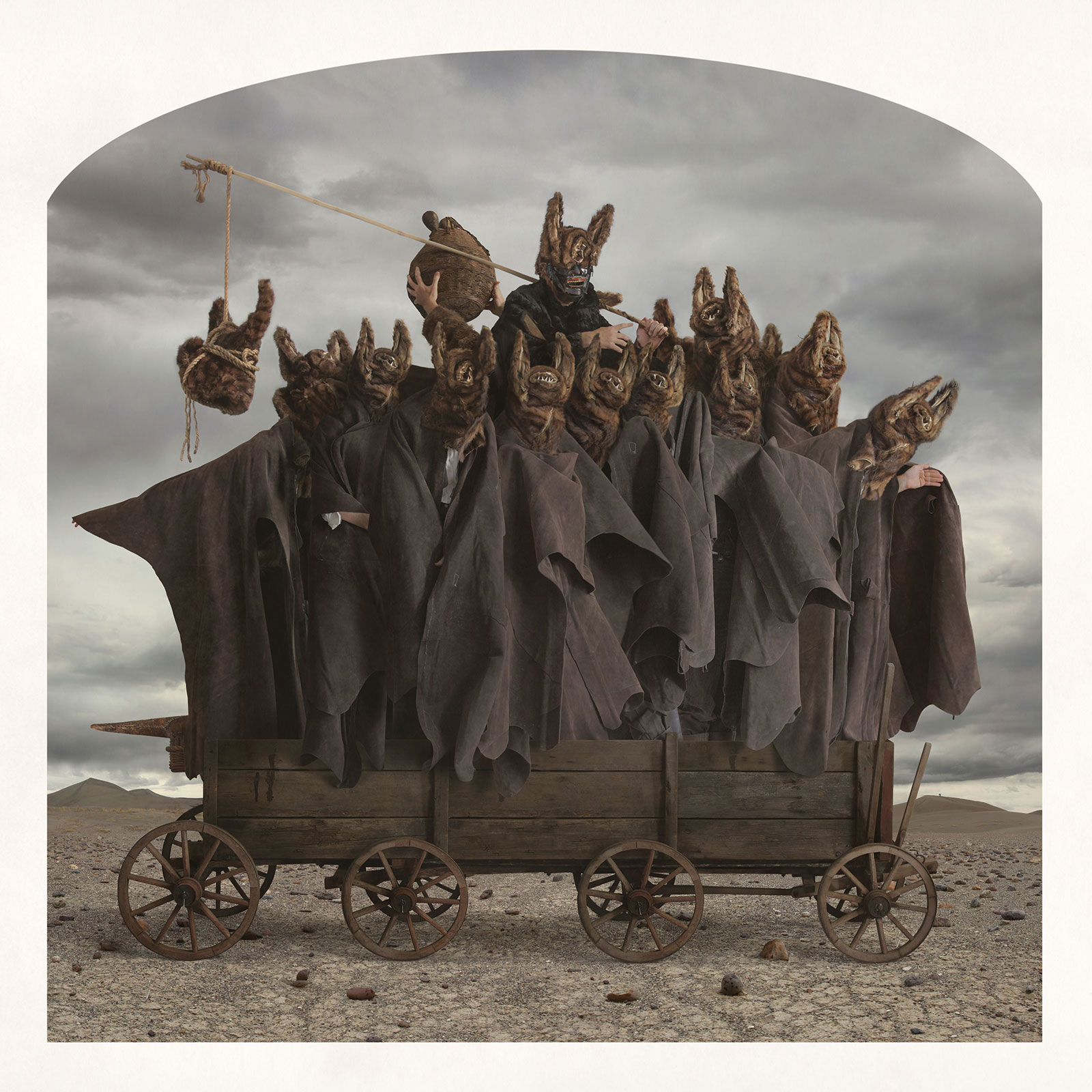
A Distant Storm
Nicholas Kahn & Richard Selesnick, 2014, archival inkjet print, 35″ x 35″ © 2014, courtesy of the artists
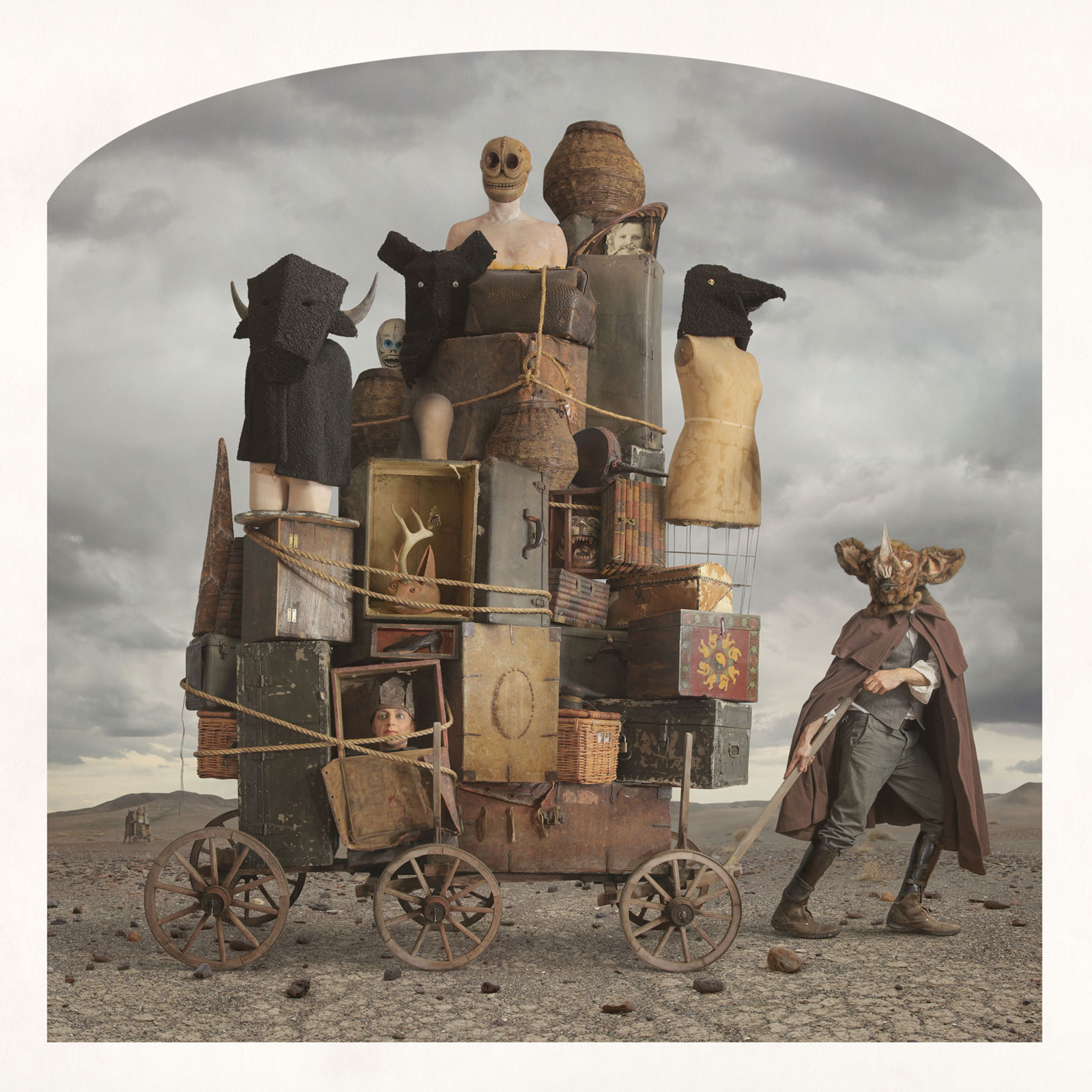
Dust Bowl
Nicholas Kahn & Richard Selesnick, 2014, archival inkjet print, 35″ x 35″ © 2014, courtesy of the artists
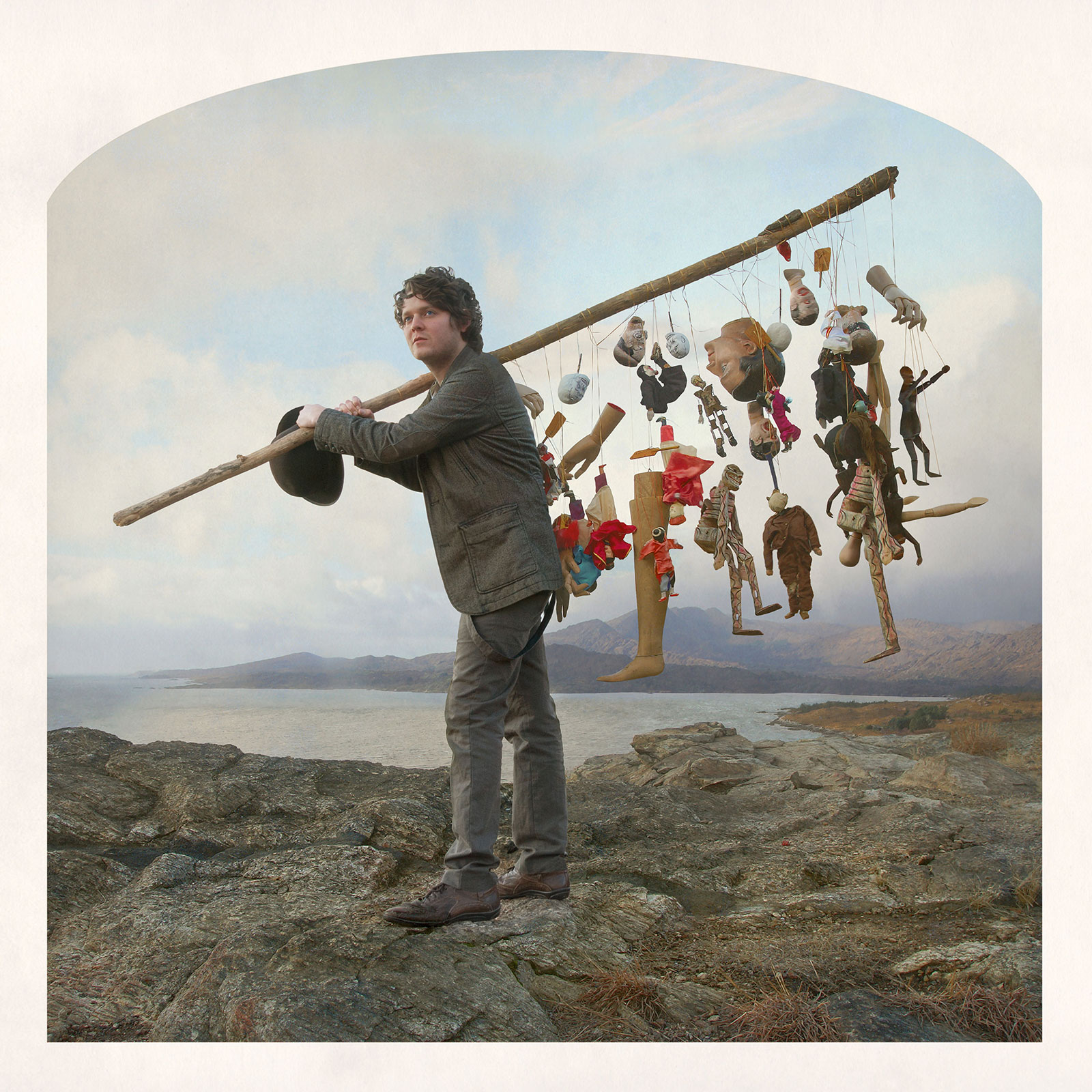
Itinerant Puppeteer
Nicholas Kahn & Richard Selesnick, 2014, archival inkjet print, 35″ x 35″ © 2014, courtesy of the artists
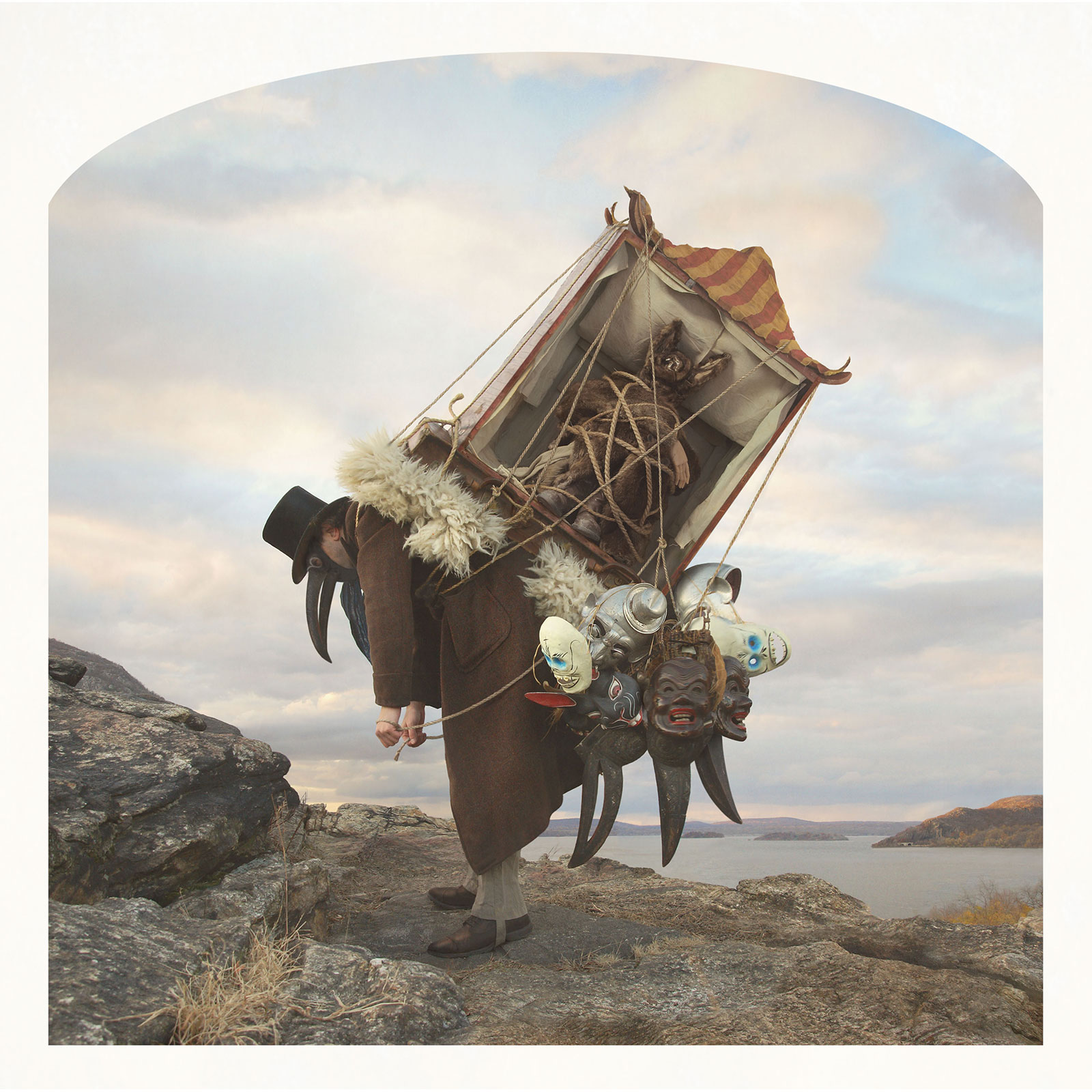
The Plague Doctor
Nicholas Kahn & Richard Selesnick, 2014, archival inkjet print, 35″ x 35″ © 2014, courtesy of the artists

The Volcano
Nicholas Kahn & Richard Selesnick, 2014, archival inkjet print, 35″ x 35″ © 2014, courtesy of the artists


